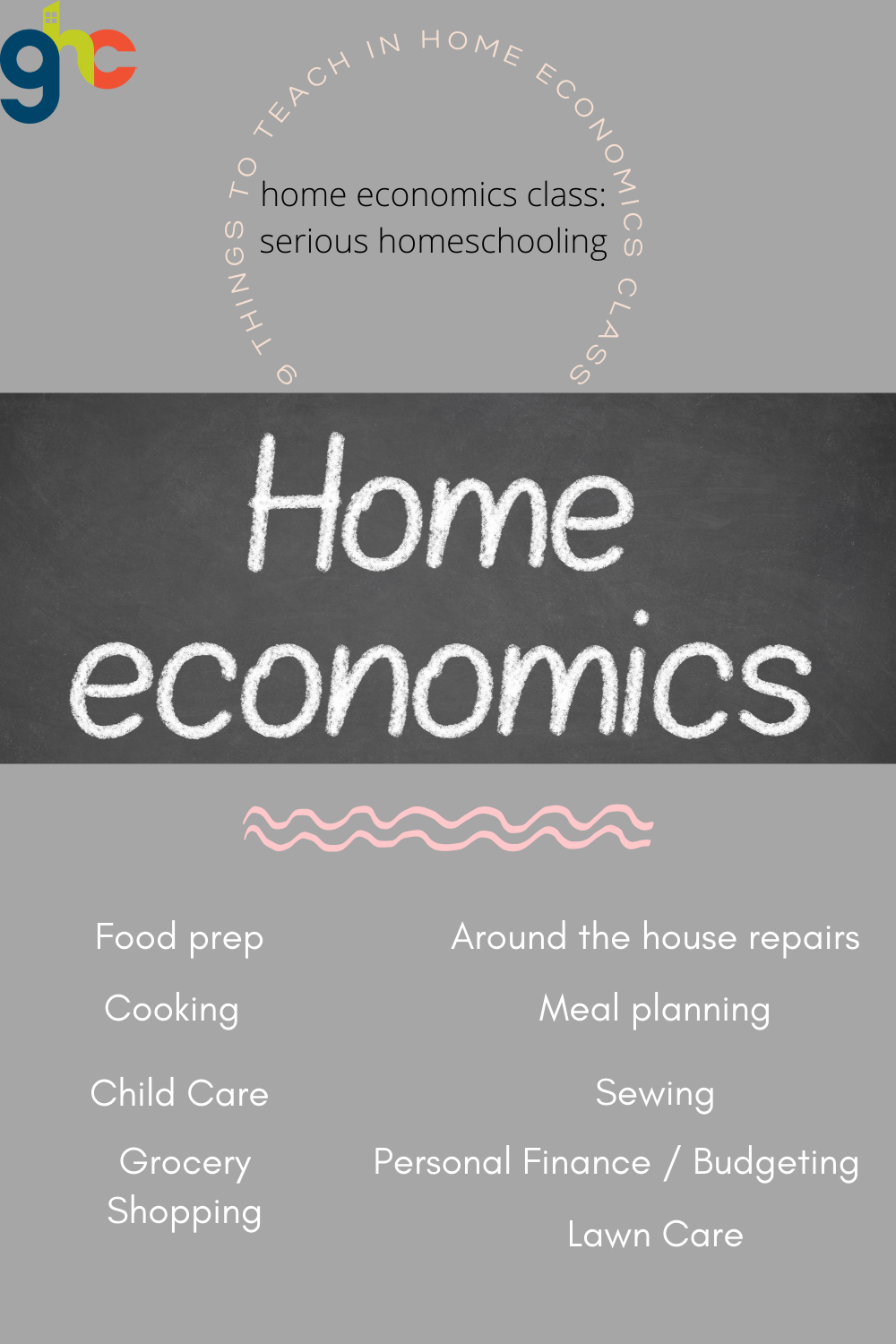Some call it home economics class, and others call it life skills. You might call it something entirely different. However, the fact remains that the things we teach our children in this arena can be very serious, even though it’s classified as an elective.
Many things fall within this subject category that might not have fit years ago. For instance, sewing and laundry are certainly great real-life skills that are automatically considered “home economics course” subject matter. But it may be just as important to know how to run a lawnmower or change a tire. It all comes down to maintaining as much autonomy in life as is possible, and isn’t that of the utmost importance?
Here, we’re going to discuss why it is so important and ways you can teach it not only to achieve the most retention for your child, but to make it as fun, creative, and rewarding as possible. As veteran homeschoolers know, this is about so much more than simply memorizing stale facts. We want the journey to come alive, and to grow right along with our children.

What to Teach in Home Economics Class?
Any skill used to maintain a home and a regular life schedule can be included in a home economics class. It can be different from one child to the next, especially if your child is a special needs child. In that respect, home ec classes can take a very different route, especially for the high-functioning child.
Here are just a few of the subjects you might want to cover in your home economics class:
Food preparation
Meal Planning
Grocery Shopping
Cooking
House Cleaning and organization
Sewing
Laundry
Around-the-house repairs
Personal Finance and Budgeting
Lawn Care and small engine repair
Child care
How to Teach Home Economics
Some home educators choose to teach home economics as they go about their daily routines. For instance, assigning your child to help with or prepare specific meals, depending on their age, could be one way to see how they are progressing in their understanding of the subject matter. Assigning different tasks according to age is useful for child development. However, that doesn’t always work for everyone, as other parents create lesson plans, unit studies, or coursework for the materials to be covered.
This just might be a great place to get Dad or other family members involved with the home management lessons. For things like yard maintenance, household repairs, or vehicle repairs, he can cover a lot of ground in a short amount of time. Of course, I don’t mean that moms can’t teach those things. I’ve been working on cars since the age of 13 with my Dad and brother and have done plenty of household repairs in remodeling an entire home with my husband. However, there are simply times when Mom needs a break or planning time, or an outing with a younger or older child, and this is a great way to manage it. Homeschooling should always be a team effort
Still again, some homeschooling parents schedule certain elective classes through summer breaks only. Without the distraction of any other classes, they focus on these exclusively and usually finish them before the next official school year starts. It also allows older siblings the time to teach younger siblings. Especially during high school, young adults can use this time to gain real-world experience for skills that will be useful for them in college. Homemaking skills such as cooking, meal prep, and grocery shopping are skills that prove to be helpful once young people are off on their own.
Don’t forget to note and track even the life moments that put these skills into play. Helping with car repairs, or helping arrange coupons and budget for groceries, or meal prep. All of these will eventually allow you to gauge the child’s level of mastery and you can certainly add them to a transcript for either home economics/life skills, based on the Mastery approach of teaching. Don’t forget to include hobbies that can also go towards these classes, such as babysitting, CPR, Lifeguard classes, or any one of many that can be used throughout life.
For younger children, there are many resources online where you can find free worksheets, videos, and activities that could be a great asset in teaching early home economics skills. You can also create your curriculum by deciding which topics you’d like to teach, how long you’ll devote to each topic, how you will measure the results, and which materials and resources you will use for the class. This is a wonderful benefit of teaching this at home versus in a public school, you can alter to what your student needs!
How to Grade Home Economics
Grading your child on their home economics will depend largely on the method you use to teach it. If you’re using a curriculum, unit studies, or some other guided resource, then you can grade lessons, quizzes, and/or tests for the entire class.
If you’re using a more laid back approach through unschooling such as simply allowing your child to take part in the ongoing work of the household, then you can either grade via journal entries, detailing what they’re learning, your observations about their performance, and whether you think they have achieved a working knowledge of the information.
Along these same lines, you can also work from a Mastery approach, which means that once you see that your child can do something all by themselves, you can cite that they have “mastered” the skill. That means if you leave your teenager in charge of the kitchen and they plan, cook, and serve an entire meal, then it’s a safe bet that they know this skill well enough to consider it “mastered”.
Utilizing Pinterest for Home Economics Class
If you’re like me and don’t like to have excessive amounts of paperwork to deal with, you can easily use Pinterest to keep track of all your home economics ideas. I simply started a Pinterest board called “Home Economics” and then created subcategories such as recipes, measurements, hacks, cleaning, finances and economics, interior design, fashion, medical, and planning for emergencies. Of course, you can personalize your board into the subcategories of your choice. Whatever works best for you is by far the best idea. You can even do a subcategory or recipes, or break it down further according to ingredients, entrees, side dish recipes, desserts, and so forth.
While you’re there on Pinterest, be sure to do some searching of this topic as well. Many other homeschoolers are using Pinterest for the same reasons and you can find their saves through the search feature. This is a great way to discover new articles, blogs, lesson plans, and ideas without the cumbersome sorting you often must do with Google search results.

In Closing
You can easily research this homeschool subject in much further detail on your own, based on your own requirements, but I hope that this has given you a nudge in the right direction. Remember that it’s just as appropriate to teach boys how to cook and girls how to work on cars, not because of any social justice movement, but because it’s the reasonable thing to do, especially if they enjoy it. As I mentioned earlier, I learned how to work on cars at a young age. As a “Daddy’s girl”, I wanted to do whatever he did and, in his eyes, I would not be at the mercy of a broken-down vehicle when I finally learned how to drive! Win-win!
It should be obvious by now that very few home economics or life skills should be considered “elective”, nor should they be taught that way. The objective, as noted earlier, is to foster as much independence and “mastery of life” as the child is capable of learning. Your child will reap life-long rewards as an avocation to whatever profession they may choose.
So, when you’re planning your home economics class for your child, feel free to create the one that works most effectively for your child and your family.

